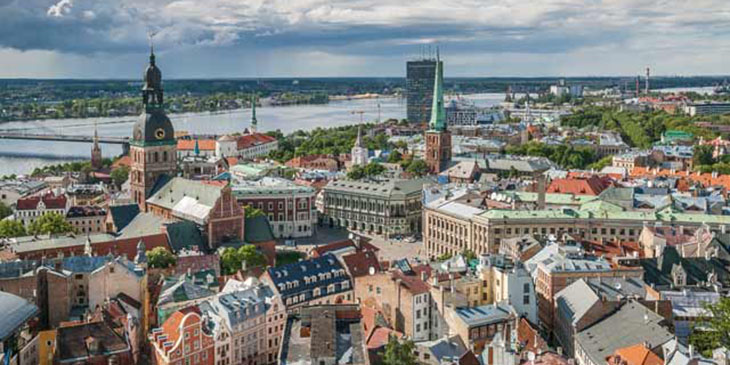Baltics rising for Chinese in EU-China Tourism Year

Europe continues to be firm favourite among Chinese outbound travellers, but it’s niche destinations such as the Baltic states which are seeing high pace of growth from the Chinese market.
The EU-China Tourism Year (ECTY) in 2018 is bearing fruit for European destinations, which saw a year-to-date increase of four per cent in Chinese arrivals for the first eight months of 2018, along with a year-on-year increase of 2.2 per cent during May-August.
Forward bookings from China to EU countries for September to December are ahead by 4.7 per cent from last year’s booking situation.
CITS group Shanghai, secretary director and general manager, Lu Jun, estimated that the ECTY resulted in more than 10 per cent increase in traffic to Europe.
Speaking to TTG Asia at the recent Global Tourism Economy Forum in Macau, he said: “Eastern/Central Europe, especially the Baltic states, have seen great growth. In fact, we have already seen Chinese visitors’ footprints spread beyond key cities through EU’s promotions of destination countries like Slovenia, Czech and Poland.
“The Chinese have learnt more about them as these countries created (dedicated marketing) to woo Chinese. For example, Slovenia highlighted the good (diplomacy with) China dating back to the 1950s.”
Fosun Tourism Group, chairman and CEO, Qian Jiannong also attributed the growth to favourable factors like visa easing, growth of disposable income and the increase of direct flights.
These, combined, have driven traffic between Asia and Europe in the first half of 2018. Qian said: “Europe is currently our key market and accounts for 48 per cent of our business. After taking full control of Club Med in 2015, our company also invested in Thomas Cook which runs 3,000 agents in Europe. We work with these two big European players and learn from them on how to increase our expertise.”
While about 80 per cent of Chinese traffic travel to big cities in Europe, there is burgeoning interest in lesser-known areas and the company continues to open more resorts offering in-depth experiences, he shared.
“As with our skiing village or beach resorts, guests do not just stay inside as we provide new products such side-line tour programmes to explore areas outside our premises.”
For Hua Yuan International Travel Group (ETI Holidays), the number of bookings for travel to Europe in 2Q2018 surged more than 100 per cent over the same period of 2017.
Chairman and CEO, Guo Dongjie, remarked: “The post-World Cup effect sent some good signs for the Chinese outbound market in the traditional low season. Meanwhile, it also spurred us players to come up with quality products in order to suit the new travel trends… We upgraded products for visiting multiple countries in Europe (Austria, Hungary, Czech Republic and Poland) and included a series product of visa-free countries like Serbia.”
The Republic of Latvia has seen similar staggering growth from China.
Deputy state secretary, Raimonds Aleksejenko, said: “Chinese visitors have doubled in number every three years and the number grows 30 per cent year by year. Baltic countries expect to welcome 60,000 more visitors per year. It’s vital for small and second-tier countries like us to have cooperative platforms as visitors come to the Baltic Sea region to see Warsaw, Helsinki and Baltic states so we need to work together to provide a coordinated package.”
Promotion of the Veneto Region of Italy started in China five years ago and Beijing-based manager, Sebastian Magrin, has worked to educate the market.
However, he contends that the regions is not top choice for Chinese yet and awareness is still low. Some signs that point towards further growth include more air connections to Italy from second-tier Chinese cities like Wuhan-Bolonga. And in 2019, Qingdao and Hangzhou may also be connected.
EU special counsellor responsible for ECTY tourism, emerging and creative industry, Eric Philippart, said: “Having Chinese travellers to visit Europe beyond key cities is pursued through a number of ongoing campaigns and is aligned with the desire of many Chinese travellers, especially among FITs (25 to 35 years of age). We will be looking at booking patterns during the first half of 2019 to measure the success of our efforts.”
source: TTG Asia
photo: Shutterstock




